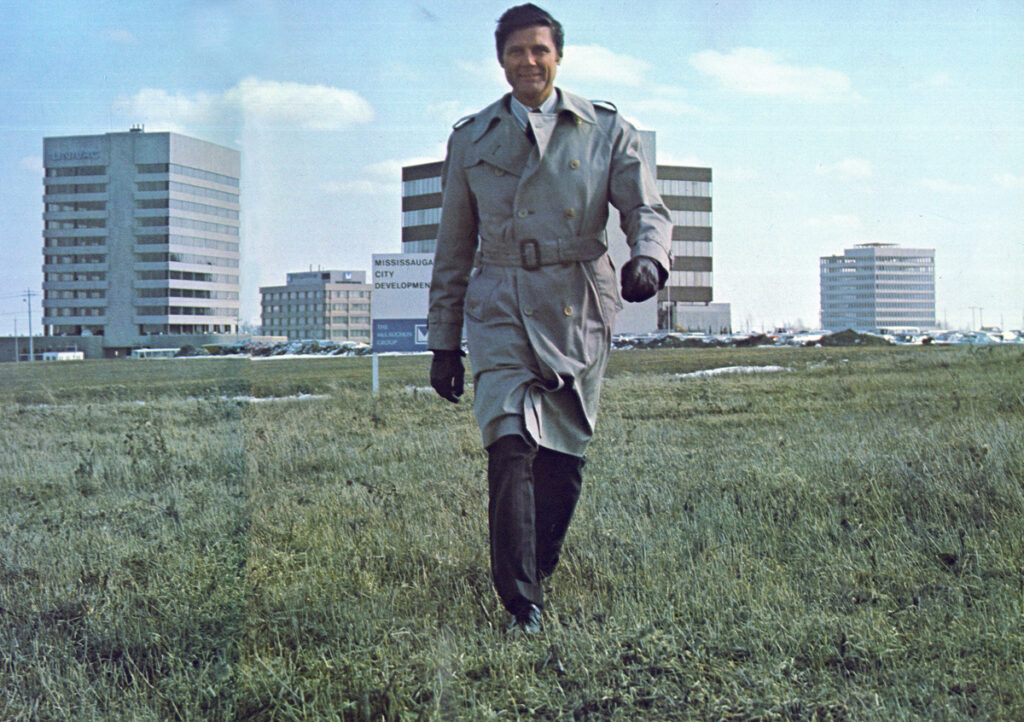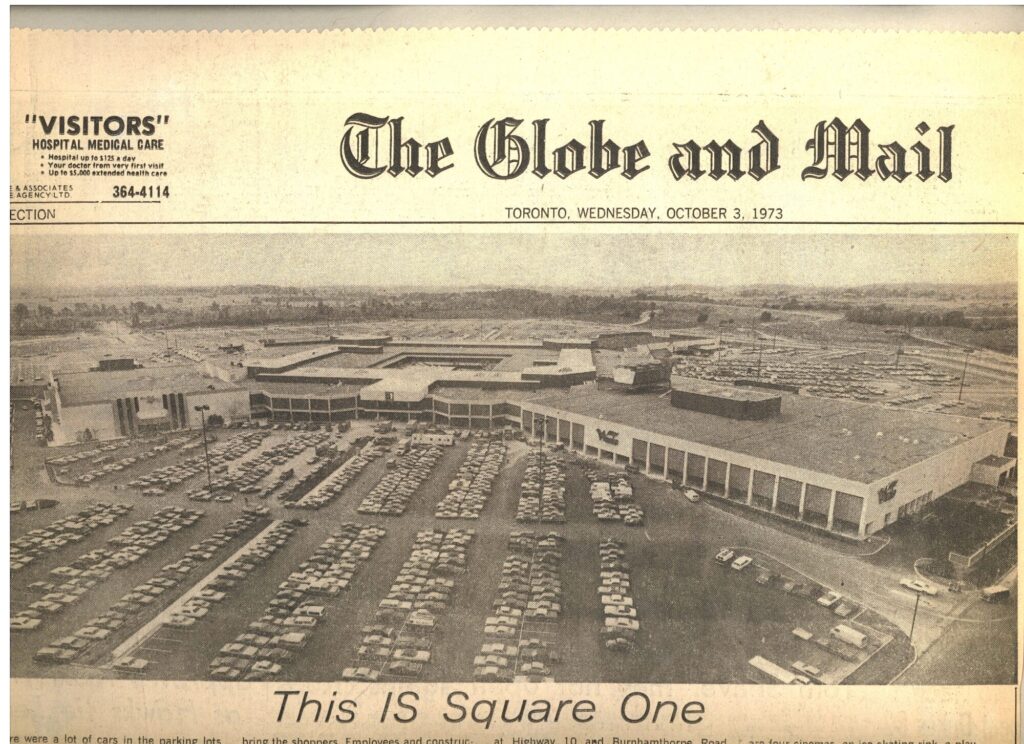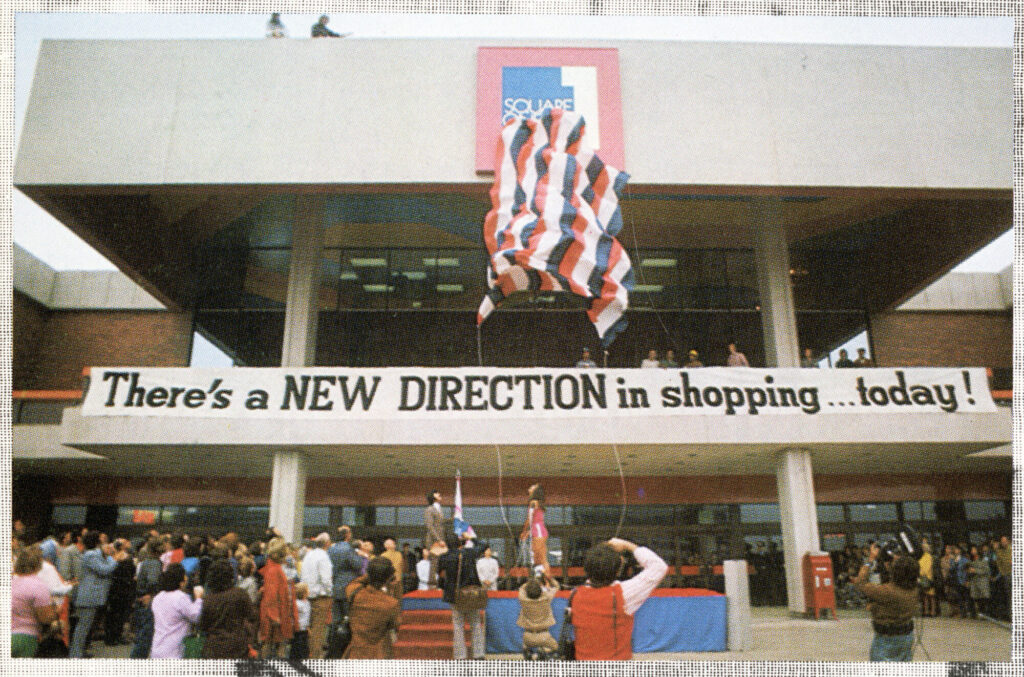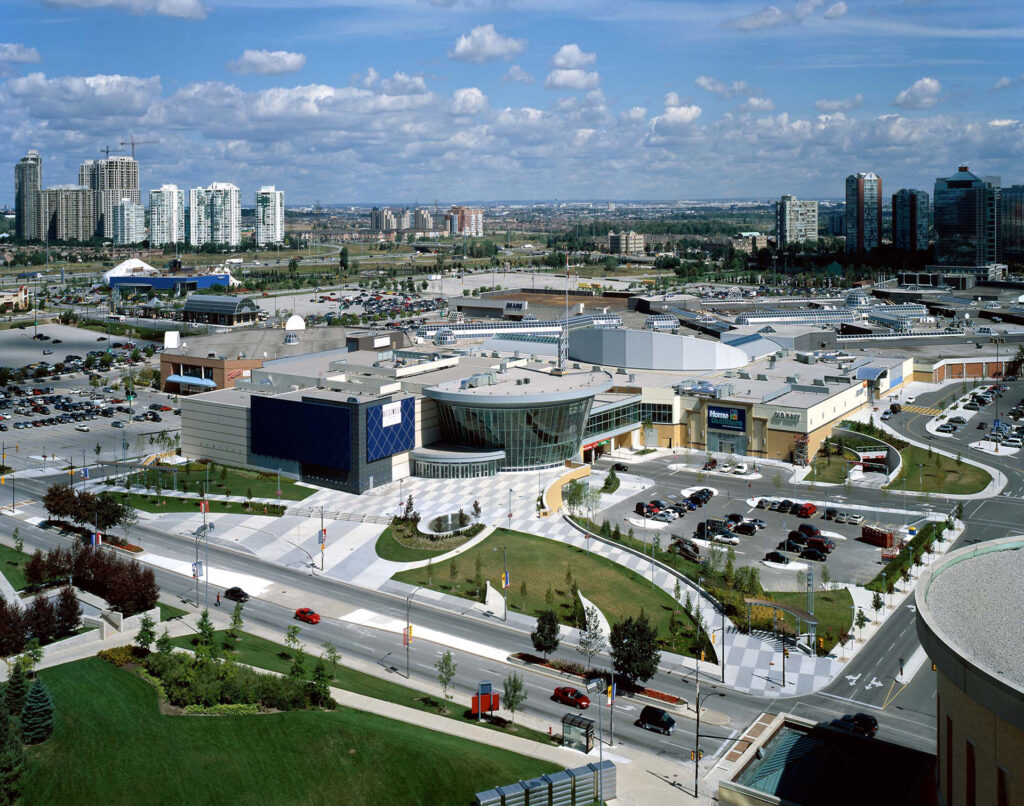To understand how Canada rocketed from colonial outpost to G7 nation take a stroll through Square One.
Mississauga’s iconic shopping mall has charted our country’s economic and population growth from its conception half a century ago to its place today as the centre of one of Canada’s most diverse and active cities.
Our story begins in the late 1950s, during a period of intense technological, political and social change.
First, the engineering ingenuity that had powered wartime aircraft production was now being used to advance commercial air travel, which led to significant upgrades at the old Malton airport.
In 1958, it was renamed Toronto International Airport, and over the next few years, it constructed new terminals, runways, and facilities to accommodate the rising number of commercial airline passengers who were setting off for elsewhere in the country and the world.
Second, as air travel became more accessible, a pair of federal government policy changes helped drive a population boom via immigration. In 1962, Prime Minister John Diefenbaker’s government eliminated racial discrimination from immigration rules, enabling non-Europeans to move to Canada in answer to the labour needs of the post-war economy.
Then, in 1967, Prime Minister Pierre Trudeau’s government introduced Canada’s now-familiar points immigration system, which assesses potential immigrants based on skill sets, education levels, language ability and family connections.
Third, a booming economy and growing population meant a rising middle class, with young families dreaming of homes with backyards, nearby parks and lots of amenities, such as movie theatres, restaurants and shopping.
Local developer Bruce McLaughlin took note of these three changes and in 1960 began to purchase land including the Carr family farm on the northwest corner of Burnhamthorpe Road and Hurontario St. By 1973 his company S.B. McLaughlin Associates, owned 4,000 acres in what is now Mississauga’s central core, stretching east west from Cawthra to Wolfdale and north south from the 401 to Burnhamthorpe Road.

Developer Bruce McLaughlin strides across the farmland where he envisioned the new city’s centre. (Photo credit: Square One)
McLaughlin was at heart a planning nerd. He envisioned a community of 125,000 people living in everything from high rises to single-family homes, with a plethora of industrial, commercial and retail businesses clustered nearby.
He sold that vision to five Canadian financial firms that invested a combined $38 million for a 50 per cent stake in what McLaughlin called the Mississauga City Development project, which set out to develop 2,600 of McLaughlin’s 4,000 acres.
First to be constructed were four office towers, which housed McLaughlin’s office and Mississauga’s municipal offices for the town-about-to-become-a-city. Then McLaughlin pledged to build 35,000 housing units within seven years – enough for 125,000 people.
At the centre of all this activity McLaughlin envisioned a community shopping centre: Square One.
When it opened on October 3, 1973, at a cost of $44 million, Square One was the third-largest shopping mall in the world – and the largest in Canada – with 170 stores across one million square feet of retail space on two floors of air-conditioned comfort. In the centre was Garden Court, with a bandshell, fountains, cinemas – where I spent many Saturdays – and a skating rink in winter.

Square One was front page national news when it opened. (Photo credit: Square One)
In those early years there was also a pop-up farmers market every Friday in the parking lot. I remember walking up and down the make-shift aisles created by farmers who would line up their pick-ups, vans and box trucks, open up the back doors and sell from that week’s fresh fruit, vegetables, meat, and eggs.
Most of the farmers didn’t have far to travel because in the early 1970s, there were still family farms in Mississauga, some visible north of Square One.
The original Square One was anchored by Dominion’s grocery store, The Bay, Simpson-Sears (where my mom worked as a switchboard operator) and Woolco, the latter of which boasted of being the largest Woolco of the firm’s over 4,700 stores worldwide.
Why go big in Mississauga? Because, as Chris Skeats, Woolworth’s real estate director told the Toronto Star; “it is the boomingest area of Canada.”
And boom it did.

Ta-da! Square One was unveiled on October 3, 1973. (Photo credit: Square One)
Within a decade of becoming a city, Mississauga’s population had grown by 100,000 people to 365,000. In response. Square One expanded, doubling in size to two million square feet, and adding 80 new stores. It also was one of the first malls in Canada to introduce a recycling program.
By the 1990s, Square One was the city’s most recognizable landmark and the mall was attracting celebrities, hosting fashion shows and community events.
Today it is the largest mall in Ontario, welcoming over 24 million customers each year.

Square One today. (Photo credit: Square One)
With over 2 million square feet of retail space, Square One hosts over 330 stores, restaurants and dining options, including the Food District, which resembles a mercantile city market with over 20 vendors offering foods from around the world and weekly pop-up surprises at the District Kitchen.
Square One sits at the heart of Mississauga’s central core, surrounded by condos, homes, businesses and City Hall. It is the primary gathering place for the over 717,000 people who call Canada’s seventh largest city home.
For over 50 years Square One’s role as a place to enjoy life and hang out with friends has helped to build this city.
You can hear more about Square One and other stories about the people and events that helped shape Mississauga via our podcast, We Built This City: Tales of Mississauga, available on your favourite podcast platform or from our website.
